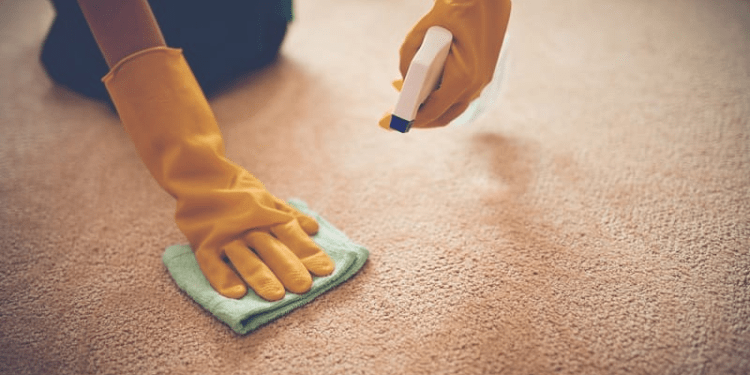Introduction
Picture this: you’ve just hosted a lively gathering at your home, and amidst the laughter and joy, an unfortunate accident occurs – someone spills red wine on your beautiful cream-colored carpet. Panic sets in, and you wonder if your beloved carpet is forever ruined. Fear not! In this article, we’ll delve into the art and science of carpet stain removal. We’ll explore the common types of carpet stains removal and their causes, essential tools and precautions to have on hand, and step-by-step stain removal techniques. So, let’s roll up our sleeves and say goodbye to those stubborn stains!
The Science Behind Carpet Stains
Before we dive into the stain removal process, it’s essential to understand the science behind carpet stains. Carpets are often made from various fibers such as nylon, polyester, wool, and more. Each fiber type has different characteristics that impact how they react to spills and stains. Additionally, the absorbency of the fibers plays a significant role in stain formation.
The pH levels of substances also influence how they interact with carpet fibers. Acidic substances like red wine can cause color changes, while alkaline substances might lead to bleaching effects. Understanding these chemical reactions is crucial for effective stain removal.
Common Carpet Stains and Their Causes
There’s an array of potential carpet stains waiting to happen in any household. Some of the most common culprits include red wine stains from your dinner party, coffee and tea stains from your morning pick-me-up, pet stains from adorable yet mischievous companions, and grease and oil stains from kitchen mishaps.
Each type of stain has its unique properties, making it necessary to use specific stain removal techniques tailored to its composition.
Essential Tools and Precautions
When dealing with carpet stains, it’s essential to arm yourself with the right tools and take proper precautions. One of the most crucial aspects is understanding the difference between blotting and scrubbing. Blotting gently lifts the stain without spreading it, while scrubbing can grind it deeper into the carpet fibers.
You might also wonder whether to use homemade cleaners or commercial products. We’ll explore the benefits and drawbacks of each option. Additionally, always test any cleaner on a hidden area of your carpet to ensure it won’t cause discoloration or damage.
Step-by-Step Stain Removal Techniques
When a spill happens, immediate action is vital to prevent the stain from setting in. We’ll outline the general stain removal process, which involves identifying the stain type, blotting the excess liquid, and treating the stain appropriately. For specific stains like red wine, coffee, tea, pet accidents, and grease, we’ll provide step-by-step instructions on how to tackle them effectively.
Carpet Maintenance and Prevention Tips
Prevention is better than cure, and the same holds for carpet stains. Regular vacuuming is a simple yet powerful way to keep your carpets clean and fresh. Additionally, applying carpet protectants can create a barrier against potential stains. Above all, the key is to treat spills promptly, preventing them from becoming permanent marks on your carpet.
When to Seek Professional Help
While most stains can be tackled with DIY methods, some situations call for professional assistance. Deep carpet cleaning by experts can rejuvenate your carpets and remove embedded dirt and stains. Furthermore, if you encounter stubborn stains that resist your efforts, it’s best to call in the professionals who have the tools and expertise to handle them.
Conclusion
In conclusion, carpet stain removal is a skill that every homeowner should master. Understanding the science behind carpet stains, using the right tools, and taking immediate action are crucial steps to successfully bidding farewell to those pesky marks. By adopting preventative measures and addressing spills promptly, you can keep your carpets looking pristine for years to come.


